No products in the cart.
Return To ShopUse code GENESIS for 10% off your first purchase
My Account
Login Register
Use code GENESIS for 10% off your first purchase
Many professors in secular and even some Christian colleges place the Genesis Creation account on equal footing with mythological writings from the Ancient Near East. Indeed, one can look back in history and find many different accounts of human origins. What makes the Genesis account stand apart? Is there scientific evidence that supports the Bible’s account of human origins? Let’s look and find out.
First, the Bible is very clear about human origins: Genesis lays out who made us (God, or Elohim in the Hebrew), what we were made from (dust), how we were made (divinely spoken into existence), who we were made like (in God’s image), our role in Creation (dominion), and our marital covenant for family. Scripture even includes when we were created during Creation week (Day 6) and the time in history, about 6,000 years ago based on the genealogies in Genesis.
Next, Scripture is consistent about this account, with every Bible contributor in both the Old and New Testaments holding to the same description of how we came to be, spanning 66 books over 1,500 years written by 40 writers in 3 languages on 3 continents. Billions of people over the millennia have regarded the Bible’s account of origins as historical and quite literal. Were they all wrong?
Scripture is clear that that Adam was the first man[i] and Eve the first woman, the mother of the human race (Genesis 3:20). The Apostle Paul inseparably connects Jesus to Adam, with Jesus coming to redeem us from the curse of sin and death brought by Adam.[ii] Paul also describes how Adam and Eve specifically—as individuals—fell into temptation.[iii] The Gospel of Luke even connects Christ’s genealogy to Adam and Adam’s sons who lived after him. How could that be mythical?
Without a real Adam, a real garden, a real tree, and a real enemy that led Adam and Eve into sin, the consequences for sin laid out in Genesis 3 has no foundation. And without this, the Gospel and the entire New Testament has nothing to stand on. Because of the sinful nature we inherited from Adam, we are all in need of a Savior. That’s the very foundation of the Gospel and the New Testament. Did Jesus die for the sins of a mythical Adam? Certainly not.
Unlike ancient mythological writings, the Bible makes the unique claim to be inspired so the pages of Scripture can be relied upon as Words from God Himself. The Jewish people and Christians have regarded Scripture with this level of reverence for millennia. In addition, Romans 1 says that all of Creation—including humans—are an obvious testimony to God’s creative powers and invisible attributes, so people are without an excuse.
One of the most obvious evidences that humans are created is found in our hearing system.[iv] Evolution is supposed to be a mindless, random process that takes place over millions of years. If this is the case, how did the human hearing system arise, with its five separate components that don’t function without the others? Five separate parts to our hearing system all work in unison to enable us to hear, and none of the five make any sense by themselves. What good is an outer ear (engineered for capturing sound waves) if there’s not an ear drum to capture the sound wave pulses? What good is a pulsing ear drum without the three tiny bones behind it that use leverage to amplify the sound signal by a factor of 1.7 and connect to a water-charged cochlea filled with fluid? The cochlea converts the mechanical leverage to a hydraulic system that amplifies the signal another 22 times. And what good is all of this without the 20,000 tiny hair cells (stereocilia) inside the cochlea that convert the fluid movement into an electrochemical signal that we can immediately comprehend as speech?
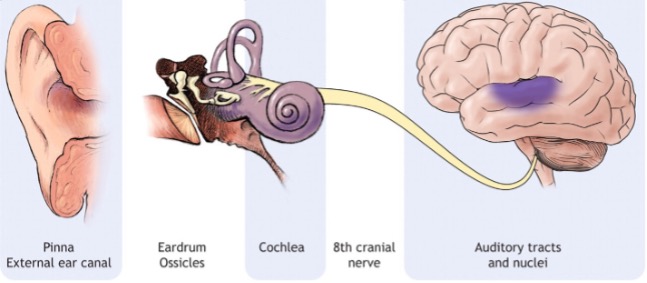
Figure 3. Five Components of Human Hearing.[v]
Creationists see this as an intentional design by a Divine Creator. Evolutionists see this as the result of time + chance + mutations + natural selection. Which explanation makes more sense? What creature would have devoted its genes and energies to crafting non-functional ear parts for generations while it waited for the fifth precise part to spontaneously appear?
The eye might even be more convincing, containing hundreds of parts that had to be assembled to create the overall purpose and function for seeing. Random chance certainly doesn’t have the intelligence needed for assembling different parts into a cohesive, inter-dependent system for sight to work.
Genetics and a Recent Creation[vi]
A substantial amount of scientific evidence supports the recent creation described in the Bible. Little-known natural timeclocks from geology, paleontology, physics, and astronomy agree.[vii] However, what does the field of genetics and modern genomics, one of the most rapidly advancing areas of science, have to offer in this regard? As it turns out, new discoveries using the tools of modern biotechnology also showcase recent creation and events associated with the global flood.
Genetics allow us to test the predictions of creation science versus evolution. Creation science predicts that the genomes of all the different kinds of living creatures were created perfect in the beginning. However, due to the curse on creation—related to man’s sin and rebellion—combined with the damaging effects of time, we should see degradation, corruption, and the loss of genetic information. While evolutionists do recognize that information loss occurs in short scales, the long-term, grand Darwinian model predicts just the opposite of creationists. They believe that over vast amounts of time, genomes evolved and became more complex—gaining new information through random mutational processes. New results support biblical creation in unforeseen ways.
DNA
DNA is the most sophisticated information storage system in the known universe—nothing comes even close. In fact, over 10,000 DNA molecules can fit on the head of a pin and unfolding just one of them reveals six feet of instructions capable of building who you are. Stretching out DNA in the trillions of cells in your body could reach to the sun and back hundreds of times, while the combined weight of all this DNA would not be heavier than an egg.[viii]
Perhaps you’ve heard that humans and chimps share 98% of their DNA.[ix] But did you know that when they made this comparison, they ignored 18% of the chimp genome and 25% of the human genome?[x] Plus, the chimp genome is over 6% larger than ours! When they give the 98% similarity figure, it’s based on cherry-picked DNA regions that were similar. Of course, humans and chimps have similar DNA; they’re both mammals living in the same world with similar requirements for biological life. Our DNA is also similar to several other creatures. See the Technical Appendix for a more detailed discussion on this topic.
Mitochondrial DNA
Mitochondrial DNA (mtDNA) is unique because it comes only from the mother’s egg, making it useful for tracing maternal ancestry. Since DNA was sequenced in 1981, researchers have been studying the mutation rates in mtDNA to try and estimate when different groups of people possibly diverged. Evolutionary researchers have based these timelines on the assumption that humans and chimps shared a common ancestor about five million years ago.
That date was based on counting the mtDNA and protein differences between all the great apes and timing their divergence using dates from fossils of one great ape’s ancestor. This evolutionary assumption counts on the mtDNA mutation rate of about one mutation every 300 to 600 generations, or one every 6,000 to 12,000 years.[xi]
Do these evolutionary assumptions hold up? Actually, recent studies have shown that the actual, observed mutation rates are much faster than the rates assumed by evolution theory, causing researchers to re-think the mtDNA clock they depend on for forensic investigations. This discovery was published in Nature Genetics by Dr. Parsons and his colleagues who investigated the mtDNA of 357 individuals from 134 different families representing 327 generational “events,” which are counted by the number of times that mothers passed on mtDNA to their offspring. Parson’s team showed that mutation rates actually occur at a rate of 1 every 33 generations, which was twenty-fold higher than estimates based on the theoretical 5-million-year timeline between chimps and humans.
This faster mutation rate discovery has stood fast even as the number of families in the study has doubled. For example, Howell’s team analyzed mtDNA from 40 members of a family, finding an overall divergence rate of one mutation every 25 to 40 generations. Howell remarked that “Both of our studies (his and Parsons) came to a remarkably similar conclusion.” Based on these findings, Howell warned that phylogenetic studies—studies that try to estimate the evolutionary branching between animal kinds—have “substantially underestimated the rate of mtDNA divergence.”
As one science writer puts it, “evolutionists are most concerned about the effect of a faster mutation rate. For example, researchers have calculated that “mitochondrial Eve”—the woman whose mtDNA was ancestral to that in all living people—lived 100,000 to 200,000 years ago in Africa. Using the new clock, she would be a mere 6,000 years old.”[xii] This of course fits well within the Bible’s timeline.
Based on their updated work, “identifying 220 soldiers’ remains from World War II to the present,” Parsons and Holland now have “new guidelines—adopted by the FBI as well—to account for a faster mutation rate.” Studies have also confirmed that there was a massive DNA variability explosion that happened on earth just thousands of years ago, within the time frame of Noah’s Flood and the Babel dispersion that occurred afterwards.
Human Origins and Fossils
If human evolution was true, we should find millions, thousands, hundreds, or even just a dozen “in-between” creatures alive today. But the score for these “transitional forms” today is zero. Not one creature lives today that can be branded half-ape and half-human. Instead, apes produce apes and humans produce humans, just like the Bible describes.
While college labs have replicas of supposed examples of transitions in the fossil record, careful study reveals they are either ape or human. Also, consider the fact that there are very, very few such “examples” (as pointed out below). Second, there are significant problems with the ape-to-human transition fossil icons that are used to support evolution’s case (see discussion on the leading icon, Lucy, in the section below).
If “molecules-to-man” evolution was true, we would expect evidence of millions of in-between creatures that were still evolving along the ape-to-human progression. This was even a question that Charles Darwin, the 19th century promoter of evolution, asked about the historical fossil record. He wrote, “By evolution theory, innumerable transitional forms must have existed.” He then asked, “Why do we not find them embedded in countless numbers in the crust of the earth?”[xiii] And, if human evolution were true, wouldn’t we expect plenty of obvious “transitional creatures” between apes and humans in the crust of the earth? Darwin also asked, “Why is not every geological formation and every stratum full of such intermediate links? Geology assuredly does not reveal any such finely graduated organic chain.” He followed this question by saying this was the “most obvious and serious objection which can be urged against the theory.”[xiv] In other words, Darwin knew that his theory would be weakened if researchers in the future did not dig up millions of “in-between” creatures. According to Ian Tattersall, the Director of the American Museum of Natural History, if one were to collect all the alleged transitions between humans and apes, “You could fit it all into the back of a pickup truck if you didn’t mind how much you jumbled everything up.”[xv] That’s certainly not the footprint we expect evolution to leave behind.
What do we find today? Millions of ape-human half-breeds? No. In fact, we see over seven billion people on the planet who are all obviously human in every sense. Though some physical and many cultural differences display God’s creativity, we are all the same kind—sons and daughters of Adam and Eve. People from various regions of the world can have families together. And what do we find in the crust of the earth after digging up billions of fossils for over 150 years since Darwin posed his “big questions” above? We find a handful of fossil creatures that better fit either the apes or human categories than they do the evolutionary category of ape-human transition.
It seems that Darwin wanted a clear line of evidence showing “half-way-in-between” ape-human creatures. We should have millions of their bones in earth’s sediments. Yet we do not find them. What we see instead is what God said: mankind is made in the image and likeness of God, able to think, plan, worship, pray, and create. We also see variations between people groups as the Bible mentioned both in the Old (Genesis 9:18–19) and New Testaments.
For example, consider Acts 17:26–27, which records Paul’s gospel presentation to pagans. It says, “And He has made from one blood every nation of men to dwell on all the face of the earth, and has determined their pre-appointed times and the boundaries of their dwellings, so that they should seek the Lord, in the hope that they might grope for Him and find Him, though He is not far from each one of us.”
God made humans in His likeness, breathed His breath of life in them, and gave them charge over all of His Creation—just as we still see today. We see today just what the Bible specified ten times in the very first chapter: that all living creatures would reproduce and fill the earth each after their own kind.
About Lucy: The Leading Ape-to-Human Icon
Now we turn to the leading human evolutionary icon of today: Lucy. The year 1974 welcomed the famous “Lucy,” a fossil form that bears the name Australopithecus afarensis. Lucy is arguably the most famous human evolution icon ever displayed in public school textbooks. Pictures and dioramas of Lucy inhabit countless museums and thousands of articles and dissertations.
Donald Johanson discovered Lucy in Ethiopia, Africa, and she quickly grew to be known as the supposed “missing link” between man and ape. At only about 3-1/2 feet tall and only about 60 pounds, she’s very close to the size of small apes today.[xvi] The scientific name Australopithecus simply means “southern ape.” Southern ape is a very appropriate name because, as you’ll learn below, Lucy was just that—an ape!
Although public school textbooks often state that Lucy was our ancestor and they feature human-like drawings of her, the fossil evidence tells quite a different story. Over 40 years of Lucy research and about 20 more discoveries of her kind have raised new questions about its supposed evolutionary connection. Evolutionary research journals have substantiated ten fatal flaws regarding the claim that Lucy and her species are really our early ancestors.[xvii]
Fatal Flaw #1: Lucy’s Skull
Even though only a few fragments of Lucy’s skull were found, they revealed that her skull was about the same size as a chimpanzee. As Donald Johanson himself said, “Her skull was almost entirely missing. So knowing the exact size of Lucy’s brain was the crucial bit of missing evidence. But from the few skull fragments we had, it looked surprisingly small.”[xviii] Later estimates reveal that Lucy’s brain was just one third the size of a human brain, which makes Lucy’s brain the same size as the average chimpanze brain.[xix]
Sir Solly Zuckerman, chief scientific advisor to the British government, said that the “Australopithecine skull is in fact so overwhelmingly ape-like, as opposed to human that the contrary position could be equated to an assertion that black is white.”[xx]
The skull in Figure 4 shows a rendition of what Lucy’s skull may have looked like. Notice that the brown parts are what they found; the white parts used to fill in most of the skull are imagined. Notice its sloped and ape-like. It’s also the size and shape that closely resembles a modern bonobo (a cousin to the chimp).
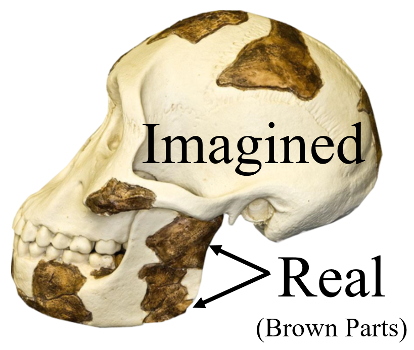
Figure 4. Lucy’s Skull Reconstruction.[xxi]
Leading paleontologist, Dr. Leakey, stated, “Lucy’s skull was so incomplete that most of it was ‘imagination made of plaster of Paris,’ thus making it impossible to draw any firm conclusion about what species she belonged to.”
The Foramen Magnum
The foramen magnum is a hole in the bottom of a skull where the top of the spinal cord enters. The angle at which the spinal cord entered the foramen magnum of Lucy’s species is nearly identical to a chimp’s—indicating that Lucy’s species walked hunched-over on all fours.[xxii]
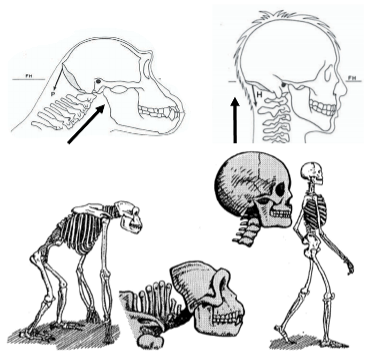
Figure 5. Foramen Magnum Angle and Walking Angle Comparison (Chimps to Humans).[xxiii]
One study conducted by evolutionary scientists showed that the angle of the foraman magnum of Lucy’s species was “well below the range for our sample of modern humans but overlaps the low end of the range for position between modern apes and humans, but closer to the former (chimpanzees, specifically).”[xxiv]
Fatal Flaw #2: Lucy’s Semicircular Canals
Humans have three semicircular canals embedded deep within our ears that are integrated with our brains, heads, and eyes to keep us balanced as we move. Apes’ semicircular canals orient to their up-tilted heads. To investigate how these semicircular canals are involved in the movement of various creatures, scientists have studied them in depth using advanced scanning techniques and making measurements of their different structures. Australopithecines, as well as other living and non-living apes, all have semicircular canals that fit ape-oriented heads that fit bodies designed for walking on all fours, whereas humans semicircular canals match upright, two legged locomotion.

Figure 6. Semicircular Canal.[xxv]
In particular, they learned that the semicircular canals of Australopithecines were best suited for “facultative bipedalism,”[xxvi] which means walking occasionally on two feet, just like many apes walk today. While this study focused on Australopithecus africanus—and Lucy’s species has been labeled Australopithecus afarensis—they are anatomically similar.[xxvii]
What about Lucy’s species specifically? Dr. Bernard Wood conducted a study that revealed that the semicircular canals of Lucy’s species “were more like those of chimpanzees than of modern humans. The fluid-filled semicircular canals are crucial in maintaining balance, and so all three lines of evidence suggest that the locomotion of Australopithecus afarensis was unlikely to have been restricted to walking on two feet”[xxviii] (emphasis added).
Another report in the leading secular science journal Scientific American[xxix] reviewed the research conducted on a baby Australopithecus afarensis, stating: “Using computed tomographic imaging, the team was able to glimpse her semicircular canal system, which is important for maintaining balance. The researchers determined that the infant’s semicircular canals resemble those of African apes and other Australopithecines (such as Australopithecus africanus). This, they suggest, could indicate the Australopithecus afarensis was not as fast and agile on two legs as we modern humans are.”
One fascinating aspect of semicircular canals is that, while they all work together, each of them provides a separate sense of directional balance: “The superior canal detects head rotations on the anterior-posterior (side-to-side movement, like tilting the head toward the shoulders) axis. The posterior canal detects rotations on the sagittal plane (forward and backward movement, like sit-ups). The horizontal canal senses movement on a vertical basis, as the head rotates up-and-down on the neck.”[xxx]
It just so happens that the two same canals that are most involved for helping us walk upright are the two canals that are statistically significantly different[xxxi] between humans and chimps. Lucy’s species clearly identifies with chimps. Dr. Spoor noted that two of the three semicircular canals in particular coordinate “upright bipedal behavior” because they are involved in “movements in the vertical plane” (i.e., upright walking). [xxxii] Drs. Day and Fitzpatrick agree with this, stating: “The anterior and posterior canals of the human vestibular organs are enlarged in size relative to the horizontal canal whereas the three canals are more equal in size in other species. The significance of this is that the anterior and posterior canals are orientated to sense rotation in the vertical planes, the movements that are important for controlling upright balance”[xxxiii] (emphasis added).
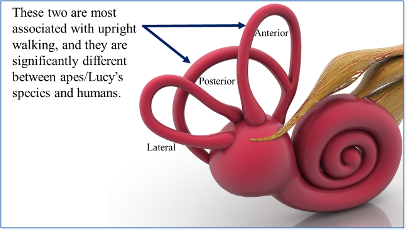
Figure 7. Semicircular Canals.
What difference does this make? Well, think about it this way: If you had your semicircular canals surgically replaced with a chimp’s, at the very least, you’d be really disoriented! Your head would feel level only when you were looking to the sky. You wouldn’t be able to run with as much ease as you have now, since the same two semicircular canals that are significantly different between apes and humans help stabilize your head when running.[xxxiv]
Fatal Flaw #3: Lucy’s Mystery Vertebra
In 2015, press releases started coming out and showing that, even after 40 years of study involving hundreds of scientists, one of Lucy’s bones (a vertebra) didn’t even belong to her![xxxv] In fact, it didn’t even belong to Lucy’s species, but was from a Theropithecus, a type of baboon. Does that make you wonder if we’re really dealing with bones from a single individual with Lucy? Especially when Lucy was put together from hundreds of bone fragments that were found scattered along a hillside?[xxxvi]
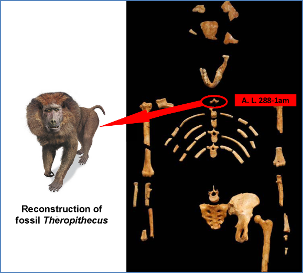
Figure 8. Incorrect Vertebra included in Lucy’s Fossil.[xxxvii]
Fatal Flaw #4: Lucy’s Pelvis
Next, we have Lucy’s pelvis, which Johanson’s team believed was “broken apart and then fused together during later fossilization…” which caused it to “be in an anatomically impossible position” and to “flare out like a chimp’s pelvis.”[xxxviii]
Their solution to this problem was to use a power saw to cut it apart and then piece it back together! After “fixing” the pelvis, they noted: “It was a tricky job, but after taking the kink out of the pelvis, it all fit together perfectly, like a three-dimensional jigsaw puzzle. As a result, the angle of the hip looks nothing like a chimp’s, but a lot like ours…”[xxxix]
Even secular scientists who hold to evolution have problems with Lucy’s pelvis reconstruction, stating “We think that the reconstruction overestimates the width of this [pelvis] area, creating a very human-like sacral plane,”[xl] and another stated, “The fact that the anterior portion of the iliac blade faces laterally in humans but not in chimpanzees is obvious. The marked resemblance of AL 288-1 [Lucy] to the chimpanzee is equally obvious.”[xli] Charles Oxnard, evolutionist and author of the Order of Man, stated that her bones seemed to show that she was a “real swinger… based on anatomical data, Australopithecines must have been arboreal [tree-dwelling] … Lucy’s pelvis shows a flare that is better suited for climbing than for walking.”[xlii] Isn’t it interesting how these remarks from evolutionary scientists never make their way into public school textbooks? Instead, Lucy is typically shown walking upright, as shown in Figure 9.
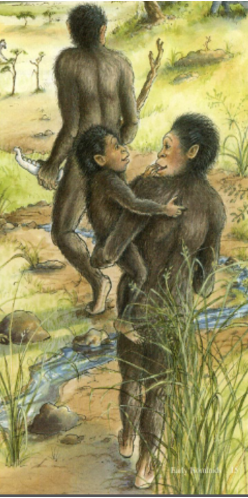
Figure 9. Lucy in Public School Textbooks.[xliii]
Fatal Flaw #5: Lucy’s Locking Wrists
Lucy had locking wrists like quadruped apes, not like humans.[xliv] This has been widely reported in both scientific journals as well as the general media. For example, even the San Diego Union Tribune reported, “A chance discovery made by looking at a cast of the bones of ‘Lucy,’ the most famous fossil of Australopithecus afarensis, shows her wrist was stiff, like a chimpanzee’s, Brian Richmond and David Strait of George Washington University in Washington, D.C., reported. This suggests that her ancestors walked on their knuckles.”[xlv] The study conducted by these scientists concluded: “Measurements of the shape of wristbones (distal radius) showed that Lucy’s type were knuckle walkers, similar to gorillas.”[xlvi]
When interviewed about their study (published in Nature) they stated: “It suddenly occurred to me that paleoanthropologists had never looked at the wrists of Lucy or other important early human ancestors discovered since the early papers were published….” so while they were visiting the Smithsonian, they went to the cast collection, inspected Lucy’s radius [forearm bone], and found that she had the “classic knuckle-walking feature.” This became obvious when they “saw a ridge of bone on the lower forearm that prevented Lucy’s wrist, like that of a chimpanzee or gorilla, from rocking backward, but allowed it to lock in an upright position for easy knuckle-walking.”[xlvii] Figure 10 highlights this “locking wrist” feature they found on Lucy’s bones.
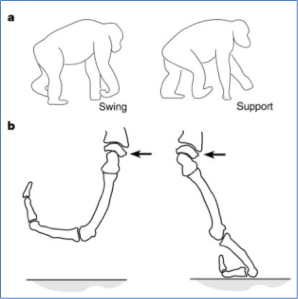
Figure 10. Lucy’s Locking Wrist.[xlviii]
The study conducted by Richmond and Strait revealed that Lucy had the same concave arm bone that joined with her convex wrist, creating a locking system that allowed for both swinging and stable knuckle-walking (as shown in Figure 11).
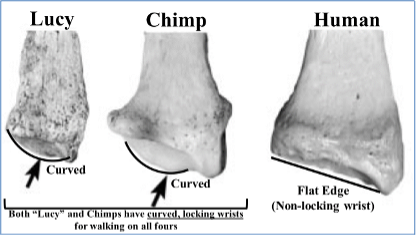
Figure 11. Lucy’s Locking Wrist.[xlix]
Figure 11 shows a close-up view from the study. The arm bone on the far left is from Lucy; the one in the middle is from a chimp; and the one on the far right is human. Notice how Lucy’s bone matches the chimp’s—they both have the concave shape that allows the wrist to lock into place for knuckle walking. Humans do not have any angle for this whatsoever because we’re not designed for walking on our hands!
Fatal Flaw #6: Lucy’s Curved Fingers
Next, we’ll take a look at the fingers of Lucy’s species. Comparison of various apes, humans, and Lucy’s species’ finger curvatures reveal some major differences. Even evolutionary scientists have admitted that the curved fingers of Lucy’s species were best suited for swinging in trees.[l] One study statistically compared various finger measurements from several different types of apes against humans, and grouped the fingers of Lucy’s species in the same category as chimps and bonobos, and far away from human’s straight fingers (see Figures 12 and 13).

Figure 12. Finger Curvature Study Revealing Lucy’s Species Is Categorized with Apes and Gorillas.[li]
Figure 13 shows a finger from one of Lucy’s kind, showing significant curvature compared to human fingers, which are not curved.
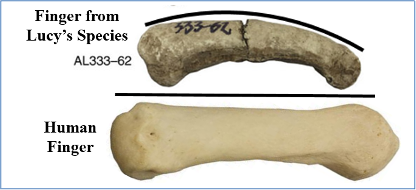
Figure 13. Finger from Lucy’s Kinds Compared to Human Finger.[lii]
Other examples of Australopithecine apes had curved fingers and ape-like limb proportions that point toward her kind as living in trees, so the same was probably true of Lucy.[liii]
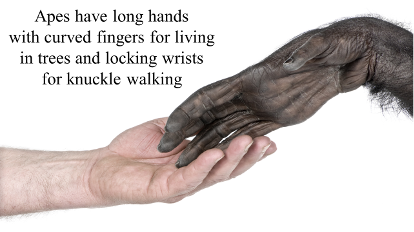
Figure 14. Human and Chimp Hands.
Fatal Flaw #7: Lucy’s Short Little Legs
Some evolutionary scientists have argued that Lucy’s legs were much too short for upright walking. Some say she walked with a “bent-hip, bent-knee” method; some say she might have “shuffled”; some say she walked on all fours; some say she was bipedal. For example, Dr. Bill Jungers at the Stony Brook Institute in New York argued that “Lucy’s legs were too short, in relation to her arms, for her species to have achieved a fully modern adaptation to bipedalism.”[liv] Drs. Stern and Sussman advocated that Lucy’s species would have walked “bent-hip, bent-knee” method, much like a living chimpanzee, because of the number of skeletal features in their skeletons which are functionally associated with arboreality in living apes (e.g., curved phalanges, long trunk but short legs, etc.).[lv] Dr. Hunt argued that the most efficient behavior for Lucy’s species would have been “bipedal posture augmented with bipedal shuffling” as a consequence of anatomical compromise between the needs of terrestrial bipedality and arboreal climbing.[lvi]
Without any of Lucy’s species alive today, one cannot know for certain how they moved around. But that hasn’t stopped several scientists—from both the evolution and creation camps—from speculating about it. As we have reviewed in this section, however, plenty of evidence from evolutionary scientists indicates she likely walked on all fours (including her semicircular canals, skull, locking wrists, curved fingers, and now, her short legs).
Fatal Flaw #8: The Widespread Exaggeration of Lucy’s Human-like Appearance
Lucy was originally found in hundreds of pieces before she was painstakingly glued together in the way they believed she was before she died. Even though many of the first reports that came out after Lucy was discovered stated that Lucy’s skeleton was “40% complete,”[lvii] Lucy’s discoverer (Johanson) clarified this in a book published 22 years after Lucy was found, stating: “Lucy’s skeleton consists of some 47 out of 207 bones, including parts of upper and lower limbs, the backbone, ribs and the pelvis. With the exception of the mandible [lower jaw] the skull is represented only by five vault fragments, and most of the hand and foot bones are missing.”[lviii] This computes to actually 23% of the complete skeleton (47 ÷ 206), not “about 40%.”
Numerous artists have drawn Lucy with human feet even though the fossil lacked both hand and foot bones. Frustratingly for those who care about truth, these illustrations continue to ignore subsequent finds, revealing that Australopithecines had curved ape fingers and grasping ape feet. Figure 15 shows how Lucy is represented at public exhibits, such as those found at the St. Louis Zoo and Denver Museum of Nature and Science.
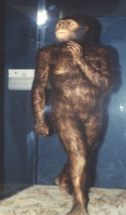
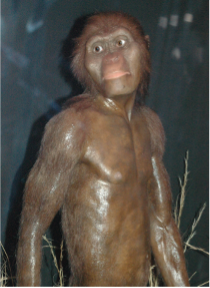
Figure 15. Lucy at Public Exhibits (Zoos and Museums). Lucy at the St. Louis Zoo (Left) and at the Denver Museum of Nature and Science (Right).[lix]
Most Lucy models show her with white sclera of the eye visible, even though 100% of all apes alive today have eyes that look dark because the sclera is not visible. Do you think this was done to make her look more human-like?
It’s amazing how they can find hundreds of bone fragments scattered across a hillside in a nine-foot radius[lx] that supposedly lay in the soil for over 3 million years and reconstruct a human-like Lucy, complete with eyewhites displayed in museums around the world! At least one bone belonging to a completely different animal was mistaken for Lucy’s for over 40 years. Were there others?

Figure 16. Making Lucy Look Human from Hundreds of Bones Fragments, Glue, and Imagination.
To further exaggerate Lucy’s human-like appearance, some Lucy models don’t even have hair! (see Figure 17).
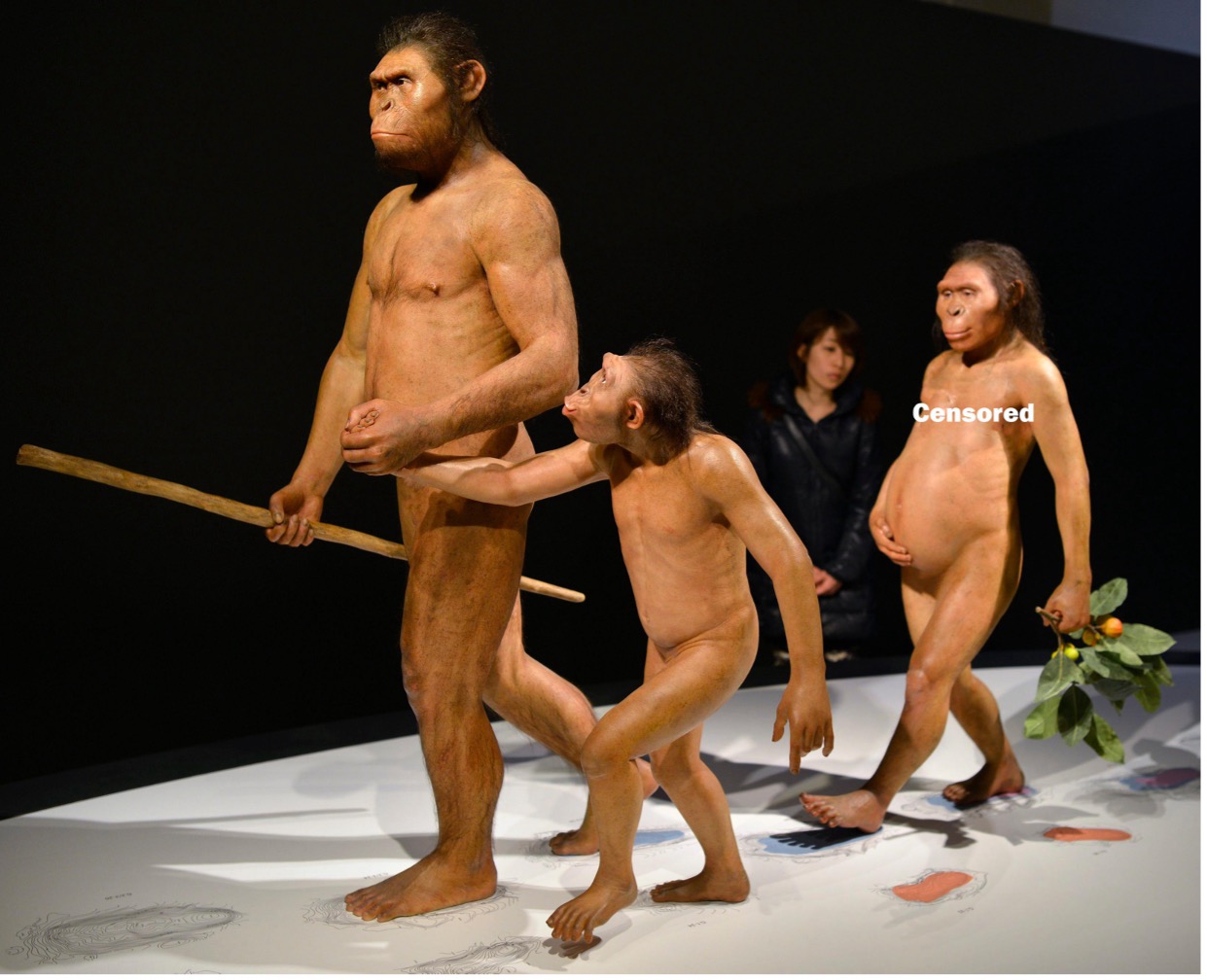
Figure 17. Hairless Lucy Walking with her “Family,” including Incorrect (Human) Feet and Hands. [lxi]
Fatal Flaw #9: Gender
A great deal of debate has emerged even over Lucy’s gender, with some scientists arguing that the evidence shows she was actually a male! Articles with catchy titles have emerged such as “Lucy or Lucifer? [lxii] and more recently, “Lucy or Brucey?”[lxiii] If evolutionists are so certain that we evolved from Lucy-like creatures, but they can’t seem to even determine the gender of the leading human evolution icon, what other assumptions are being made?
Fatal Flaw #10: Falling out of a Tree to Her Death
Now we move onto the most recent news about Lucy. In 2016 the University of Texas had a team of orthopedic surgeons reveal the findings of a study that evaluated the numerous “compression” and “greenstick” fractures in Lucy’s skeleton. A greenstick fracture goes by this name because it’s the type of bone break that occurs under compression or fast bending—much like a green stick would break when such force is applied.

Figure 18. Greenstick Fracture.[lxiv]
This team determined that Lucy most likely died while falling 40 feet out of a tree traveling 35 miles per hour, and was “conscious when she reached the ground” because of the way she tried to break her fall. Even the lead study scientist, John Kappelman, remarks, “It is ironic that the fossil at the center of a debate about the role of arborealism (living in trees) in human evolution likely died from injuries suffered from a fall out of a tree.”[lxv] Yes, it is quite ironic that Lucy, the supposed human ancestor who walked on two feet, died while falling 40 feet out of a tree.
But they’ve even offered a “rescuing device,” stating that “because Lucy was both terrestrial and arboreal, features that permitted her to move efficiently on the ground may have compromised her ability to climb trees, predisposing her species to more frequent falls.” So, to save the embarrassment of the “bipedal ape” dying by falling out of a tree, they believe that she must have fallen out of a tree because she wasn’t used to living in them anymore.” That’s quite a reach for a creature that supposedly lived over 3 million years ago!
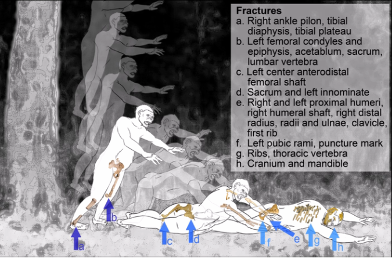
Figure 19. Lucy, the Supposedly Bipedal Ape, Falling 40-Feet from a Tree to Her Death.[lxvi]
Lucy Summary
In summary, consider these conclusions about Lucy that were drawn from leading evolutionary scientists:
- Charles Oxnard (professor of anatomy) wrote, “The Australopithecines known over the last several decades … are now irrevocably removed from a place in the evolution of human bipedalism … All this should make us wonder about the usual presentation of human evolution in introductory textbooks.”[lxvii]
- Solly Zuckerman heads the Department of Anatomy of the University of Birmingham in England and is a scientific adviser to the highest level of the British government. He studied Australopithecus fossils for 15 years with a team of scientists and concluded, “They are just apes.”[lxviii]
- Wray Herbert admits that his fellow paleoanthropologists “compare the pygmy chimpanzee to ‘Lucy,’ one of the oldest hominid fossils known, and finds the similarities striking. They are almost identical in body size, in stature and in brain size.”[lxix]
- Albert W. Mehlert said, “the evidence… makes it overwhelmingly likely that Lucy was no more than a variety of pygmy chimpanzee, and walked the same way (awkwardly upright on occasions, but mostly quadrupedal). The ‘evidence’ for the alleged transformation from ape to man is extremely unconvincing.”[lxx]
- Marvin Lubenow, Creation researcher and author of the book Bones of Contention, wrote, “There are no fossils of Australopithecus or of any other primate stock in the proper time period to serve as evolutionary ancestors to humans. As far as we can tell from the fossil record, when humans first appear in the fossil record they are already human”[lxxi] (emphasis added).
- DeWitt Steele and Gregory Parker concluded: “Australopithecus can probably be dismissed [from human evolution] as a type of extinct chimpanzee.”[lxxii]
In reality, the remains of these ape-like creatures occur in small-scale deposits that rest on top of broadly extending flood deposits. They were probably fossilized after Noah’s Flood, during the Ice Age, when tremendous rains and residual volcanic explosions buried Ice Age creatures.[lxxiii] Answers in Genesis provides a rendition of what Lucy most likely looked like (Figure 20).

Figure 20. What Lucy Most Likely Looked Like
(Answers in Genesis Presentation Library).
Conclusion
If there’s no historical Adam, there’s no Gospel. If Adam and the Fall are not historical, then Jesus died for a mythological problem and He is a mythological savior offering us a mythological hope. Atheists also understand the problem of a mythical Adam and Eve: “No Adam and Eve means no need for a savior. It also means that the Bible cannot be trusted as a source of unambiguous, literal truth. It is completely unreliable, because it all begins with a myth, and builds on that as a basis. No fall of man means no need for atonement and no need for a redeemer.”[lxxiv]
God made us on the sixth day of creation to name and take dominion over the entire animal kingdom. This happened just thousands of years ago. God sent His Son to redeems us from the Fall that happened when our real forefather sinned. We have been mercifully brought into a place of grace, forgiveness, and rest if we accept His sacrifice by confessing our sins and surrender our lives to Him.
[i] See also 1 Corinthians 15:45 and Romans 5.
[ii] Romans 5:12–19; 1 Corinthians 15:21–22 and 1 Corinthians 15:45.
[iii] See 1 Timothy 2:14.
[iv] “The Amazing Hearing System” https://youtu.be/3Lsegdfj2TE
[v] Image credit: Ossicle Hearing Clinic – Kelowna: http://kelownahearingclinic.ossiclehearing.com/hearing-services/hearing-tests/
[vi] Jeffrey P. Tomkins, Ph.D. contributed the majority of this section. The complete work can be found in Debunking Human Evolution Taught in our Public Schools (Genesis Apologetics).
[vii] Dan Biddle, Creation v. Evolution: What They Won’t Tell You in Biology Class (Maitland, FL: Xulon Press); H. Morris, et al., Creation Basics & Beyond: An In-Depth Look at Science, Origins, and Evolution (Dallas, TX: Institute for Creation Research, 2013).
[viii] Estimates on the total weight of human DNA in a single body vary greatly, but certainly do not exceed this amount. See for example: Molecular Facts and Figures (Integrated DNA Technologies):
http://sfvideo.blob.core.windows.net/sitefinity/docs/default-source/biotech-basics/molecular-facts-and-figures.pdf?sfvrsn=4563407_4 (September 1, 2019).
[ix] See the reference section in this video for references and resources used and cited in this section: Human Chimp DNA Similarity: https://youtu.be/Rav8sfuJFYc
[x] See the Genesis Apologetics Human-Chimp DNA video and citations here: https://youtu.be/Rav8sfuJFYc
[xi] T.J. Parsons, et al., “A High Observed Substitution Rate in the Human Mitochondrial DNA Control Region,” Nature Genetics 15 (1997): 363–368.
[xii] A. Gibbons, “Calibrating the Mitochondrial Clock,” Science 279 (1998): 28–29. (http://www.dnai.org/teacherguide/pdf/reference_romanovs.pdf). (Sept. 1, 2019).
[xiii] Charles Darwin, On the Origin of Species by Means of Natural Selection, or the Preservation of Favoured Races in the Struggle for Life (London: John Murray, 1859).
[xiv] Ibid.
[xv] Bill Bryson, A Short History of Nearly Everything (London: Black Swan Publishing, 2004), 529.
[xvi] W.L. Jungers, “Lucy’s length: Stature reconstruction in Australopithecus afarensis (A.L. 288-1) with implications for other small-bodied hominids.” American Journal of Physical Anthropology. 76 (2) (1988): 227–231.
[xvii] Some of these fatal flaws pertain to Lucy’s actual fossil, some are in regards to how her fossil is represented, and some involve both.
[xviii] NOVA, In Search of Human Origins (Part I) (Airdate: June 3, 1997): www.pbs.org/wgbh/nova/transcripts/2106hum1.html (September 2, 2015).
[xix] Time magazine reported in 1977 that Lucy had a tiny skull, a head like an ape, a braincase size the same as that of a chimp—450 cc. and “was surprisingly short legged” (Time, November 7, 1979, pp. 68–69). See also: Smithsonian National Museum of Natural History, “Australopithecus afarensis”: www.humanorigins.si.edu/evidence/human-fossils/species/australopithecus-afarensis (September 2, 2015).
[xx] Solly Zuckerman, Beyond the Ivory Tower (London: Taplinger Publishing Company, 1970), 78.
[xxi] Skull from: www.skullsunlimited.com.
[xxii] William H. Kimbel and Yoel Rak. “The Cranial Base of Australopithecus Afarensis: New Insights from the Female Skull.” Philosophical Transactions of the Royal Society B: Biological Sciences 365.1556 (2010): 3365–3376.
[xxiii] Upper Image Credit: M. H. Wolpoff, J. Hawks, B. Senut, M. Pickford, J. Ahern, “An Ape or the Ape: Is the Toumaï Cranium TM 266 a Hominid?” PaleoAnthropology. 2006: 36–50 (upper two images, arrows added). Lower Image Credit: Evolution Facts, Inc. Evolution Encyclopedia Volume 2, Chapter 18 Ancient Man (www.godrules.net/evolutioncruncher/2evlch18a.htm). (January 27, 2017). FM differences discussed in: William H. Kimbel and Rak Yoel. “The Cranial Base of Australopithecus Afarensis: New Insights from the Female Skull.” Philosophical Transactions of the Royal Society B: Biological Sciences 365.1556 (2010): 3365–3376.
[xxiv] Ibid., 3369–3370
[xxv] Image Credit: Wikipedia.
[xxvi] Fred Spoor, Bernard Wood, Frans Zonneveld, “Implications of Early Hominid Labyrinthine Morphology for Evolution of Human Bipedal Locomotion,” Nature 369 (June 23, 1994): 645–648.
[xxvii] Smithsonian: www.humanorigins.si.edu/evidence/human-fossils/species/australopithecus-africanus (January 27, 2017).
[xxviii] Bernard Wood, “A precious little bundle,” Nature 443, 278–281 (Sept. 21, 2006).
[xxix] Kate Wong, “Special Report: Lucy’s Baby An extraordinary new human fossil comes to light,” Scientific American: www.scientificamerican.com/article/special-report-lucys-baby/ (September 20, 2006) (January 27, 2017).
[xxx] Healthline Bodymaps: www.healthline.com/human-body-maps/semicircular-canals. Medically Reviewed on January 26, 2015 by Healthline Medical Team (January 27, 2017).
[xxxi] F. Spoor and F. Zonneveld. “Comparative review of the human bony labyrinth,” Am J Phys Anthropology, Supplement 27 (1998): 211–51. P. Gunz, et al., “The Mammalian Bony Labyrinth Reconsidered: Introducing a Comprehensive Geometric Morphometric Approach,” Journal of Anatomy 220, 6 (2012): 529–543.
[xxxii] Fred Spoor, Bernard Wood, Frans Zonneveld, “Implications of Early Hominid Labyrinthine Morphology for Evolution of Human Bipedal Locomotion,” Nature 369 (June 23, 1994): 645–648.
[xxxiii] Brian L. Day, et al. “The vestibular system,” Current Biology, 15 (15), R583- R586.
[xxxiv] Adam Summers, “Born to Run: Humans will Never Win a Sprint against your Average Quadruped. But our Species is well-adapted for the Marathon,” Biomechanics: www.naturalhistorymag.com/biomechanics/112078/born-to-run (September 1, 2015).
[xxxv] Marc R. Meyer, Scott A. Williams, Michael P. Smith, Gary J. Sawyer, “Lucy’s back: Reassessment of fossils associated with the A.L. 288-1 vertebral column,” Journal of Human Evolution, 85 (August 2015): 174–180.
[xxxvi] Personal communication: “All [Lucy’s bones were] found in an area covering about 3 square meters.” Donald Johanson (May 28, 2014).
[xxxvii] Atlas of Science, “Archaeological surprise! Lucy has company,”
https://atlasofscience.org/archaeological-surprise-lucy/ (November 30, 2015) (January 27, 2017).
[xxxviii] PBS Evolution, “Finding Lucy”: www.pbs.org/wgbh/evolution/library/07/1/l_071_01.html (September 2, 2015).
[xxxix] Ibid.
[xl] F. Marchal, “A new morphometric analysis of the hominid pelvic bone,”
Journal of Human Evolution, 38(3) (March 2000): 347–65.
[xli] Jack Stern & Randall L. Susman, “The Locomotor Anatomy of Australopithecus afarensis,” Journal of Physical Anthropology 60 (1983): 291–292.
[xlii] Charles Oxnard, The Order of Man: A Biomathematical Anatomy of the Primates (Yale University Press and Hong Kong University Press, 1984): 3.
[xliii] Image Credit: Australopithecus afarensis (History Alive! The Ancient World (Palo Alto, CA: Teachers Curriculum Institute, 2004).
[xliv] Brian G. Richmond and David S. Strait, “Evidence That Humans Evolved From a Knuckle-Walking Ancestor,” Nature, 404 (2000): 382–385.
[xlv] Maggie Fox, “Man’s Early Ancestors Were Knuckle Walkers,” San Diego Union Tribune (Quest Section, March 29, 2000).
[xlvi] Richmond & Strait, Evidence That Humans Evolved From a Knuckle-Walking Ancestor, 382–385.
[xlvii] Guy Gugliotta, “It’s All in the Wrist Early Human Ancestors Were ‘Knuckle-Walkers,’ Research Indicates,” Washington Post (March 23, 2000), A03.
[xlviii] Richmond & Strait, Evidence That Humans Evolved From a Knuckle-Walking Ancestor, 382–385.
[xlix] Ibid.
[l] Manuel Domínguez-Rodrigo, Travis Rayne Pickering, Sergio Almécija, Jason L. Heaton, Enrique Baquedano, Audax Mabulla & David Uribelarrea, “Earliest modern human-like hand bone from a new >1.84-million-year-old site at Olduvai in Tanzania,” Nature Communications 6, 7987 (2015); Jack Stern & Randall L. Susman, “The Locomotor Anatomy of Australopithecus afarensis,” Journal of Physical Anthropology 60 (1983): 280.
[li] Ibid.
[lii] Ibid.
[liii] J. Stern & R. Susman, “The Locomotor Anatomy of Australopithecus afarensis,” Journal of Physical Anthropology 60 (1983): 280.
[liv] W. L. Jungers, “Lucy’s limbs: skeletal allometry and locomotion in Australopithecus afarensis.” Nature 297 (1982): 676–678.
[lv] Stern & Susman, 1983.
[lvi] K.D. Hunt, “The evolution of human bipedality: ecology and functional morphology.” Journal of Human Evolution, 26 (1994): 183–202.
[lvii] PBS Evolution, “Finding Lucy”: www.pbs.org/wgbh/evolution/library/07/1/l_071_01.html (September 2, 2015); National Geographic, “What was ‘Lucy’? Fast Facts on an Early Human Ancestor” (September 20, 2006). National Geographic News: http://news.nationalgeographic.com/news/2006/09/060920-lucy.html (September 2, 2015).
[lviii] Donald Johanson & Edgar Blake. From Lucy to Language (New York: Simon & Schuster, 1996).
[lix] Image Credit: Answers in Genesis (left); Brian Thomas (right).
[lx] Personal communication: “All [Lucy’s bones were] found in an area covering about 3 square meters.” Professor Donald Johanson (May 28, 2014).
[lxi] Licensed through Alamy. Photo Credit Franck Robichon/epa/Corbis.
[lxii] M. Häusler & P. Schmid, “Comparison of the Pelves of Sts 14 and AL 288-1: Implications for Birth and Sexual Dimorphism in Australopithecines.” Journal of Human Evolution 29 (1995): 363–383.
[lxiii] Alan Boyle, “Lucy or Brucey? It Can Be Tricky to Tell the Sex of Fossil Ancestors,” Science (April 29, 2015).
[lxiv] Image Credit: Wikipedia.
[lxv] Source: http://news.utexas.edu/2016/08/29/ut-study-cracks-coldest-case-how-lucy-died (January 27, 2017).
[lxvi] J. Kappelman, R.A. Ketcham, S. Pearce, L. Todd, W. Akins, M.W. Colbert, et al, “Perimortem fractures in Lucy suggest mortality from fall out of tall tree.” Nature, 537 (September 22, 2016): 503–507. www.nature.com/nature/journal/v537/n7621/full/nature19332.html
[lxvii] Oxnard, The Order of Man: A Biomathematical Anatomy of the Primates, p. 332.
[lxviii] Roger Lewin, Bones of Contention (Chicago: Univ. of Chicago Press, 1987), 164.
[lxix] Wray Herbert, “Lucy’s Uncommon Forbear,” Science News 123 (Feb. 5, 1983), 89.
[lxx] Albert W. Mehlert, “Lucy—Evolution’s Solitary Claim for an Ape/Man: Her Position is Slipping Away,” Creation Research Society Quarterly, 22 (3) (December, 1985), 145.
[lxxi] Marvin Lubenow, Bones of Contention (Grand Rapids, MI: Baker Books, 1992), 179.
[lxxii] DeWitt Steele & Gregory Parker, Science of the Physical Creation, 2d ed. (Pensacola, FL: A Beka Book, 1996), p. 299.
[lxxiii] “Before humans left Babel, it appears that apes had already spread over much of the Old World and had diversified into a large array of species… Paleontologists are still discovering species of post-Flood apes. If we are correct about post-Flood rocks, apes were at their highest point of diversity and were buried in local catastrophes just before humans spread out from Babel.” Kurt Wise, “Lucy Was Buried First Babel Helps Explain the Sequence of Ape and Human Fossils,” (August 20, 2008), Answers in Genesis: www.answersingenesis.org/human-evolution/lucy/lucy-was-buried-first/ (September 2, 2015).
[lxxiv] American Atheists, “You KNOW it’s a Myth: This Season, Celebrate REASON!,” quoted in “I Agree with the Atheists!,”Around the World with Ken Ham (blog), June 1, 2011, https://answersingenesis.org/blogs/ken-ham/2011/06/01/i-agree-with-the-atheists/.
